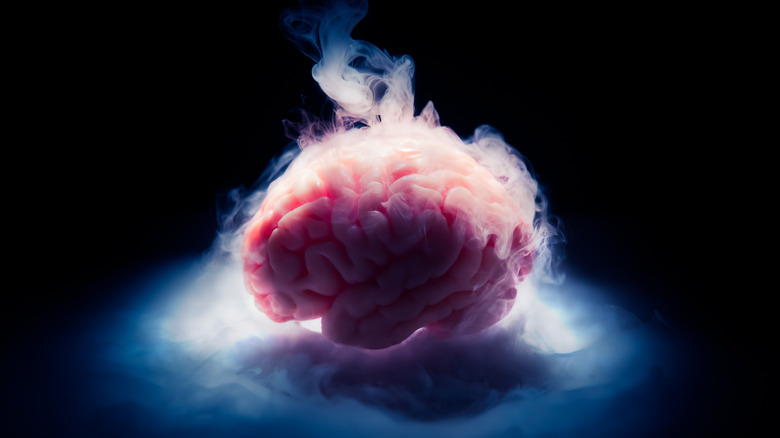This Might Be The Easiest Way To Get Over A Brain Freeze
It may be the dead of winter, but you needn't wait for warmer weather to dig into your favorite ice cream or grab an ice cold slushie from your local gas station. Yes, there's nothing quite as refreshingly cold as an ice cream sun– ow! What's up with this sudden shooting pain? Looks like you've been eating that peppermint ice cream too fast. Now your head feels it's been knocked around a bit, that sharp pain that appears out of nowhere when you're in the middle of your slushie.
The dreaded "brain freeze" or "ice cream headache" is a minor pain that seems inherent to enjoying a frozen treat. These are the result of the body's sudden reaction to an extremely cold sensation — ice cream on your tongue, for example — and attempting to warm itself up by rapidly expanding blood vessels in your head (via Cleveland Clinic). It's nothing to get yourself all worked up over and it goes away in a few seconds, but is there any way to quickly relieve yourself of that sudden migraine and get back to chilling out?
Fortunately, Mental Floss has the answer. All you need to do to get rid of a brain freeze quickly and easily is press your tongue or thumb to the roof of your mouth. This should help ease some of the pulsating pain, letting you get back to your ice cream. But how exactly does sticking your thumb in your mouth help cure brain freeze, anyway?
It's about warming your mouth up
If you find yourself being a skeptic and worrying that sticking your thumb in your mouth while eating ice cream is just some ridiculous medical myth, you'll be happy to know there's some science behind it. As the sudden pain you feel is your blood vessels constricting and opening in a rapid-response attempt to maintain your core temperature, the area you should be focusing on is your mouth. Putting your tongue or thumb to the palate or roof of your mouth will quickly help to warm the inside of your mouth and get your temperature back into swing.
As John Hopkins Medicine describes it, brain freeze is a type of "referred pain," where changes in one part of the body affect another part. In this case, the inside of your mouth affects the top of your head. It's not really a brain freeze so much as it is a "mouth freeze," so to speak. Furthermore, if you are a frequent sufferer of migraines, you may experience brain freeze more often than most while consuming something cold. This isn't too much of a problem as, again, brain freezes last for only some seconds to a few minutes at a time, and are just the body's natural responses to such stimuli.
Other treatments for brain freeze include drinking warm water or covering your nose and mouth while breathing rapidly to increase warm air flow (via Medical News Today).

